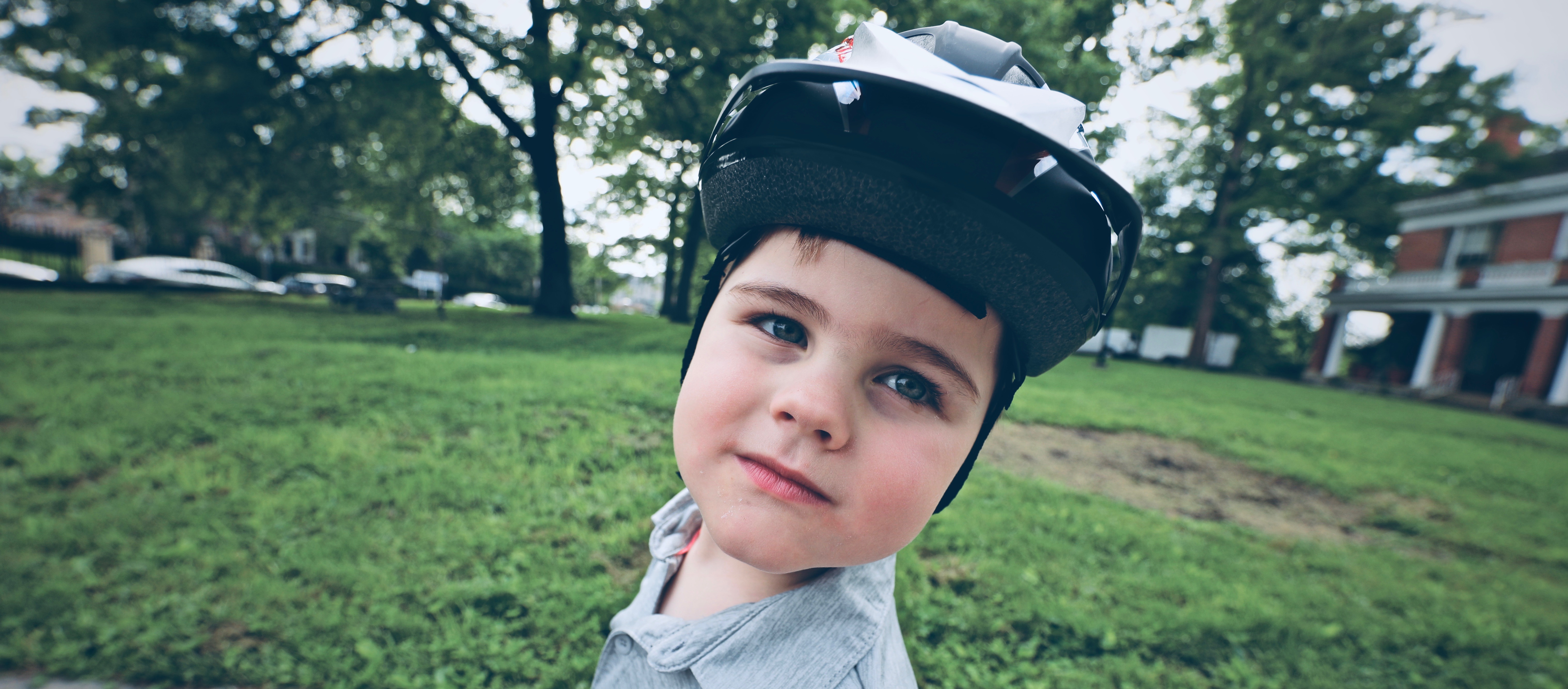A helmet is the most effective way to reduce the risk of traumatic brain injury when a child is riding a bike, scooter or skateboard. That should be enough to convince anyone to wear one, but studies show only 30% of kids in Ohio wear a helmet when riding.
Apart from the automobile, bicycles are tied to more childhood injuries than any other consumer product, including trampolines, ladders and swimming pools.
The good news is, if your child is wearing a properly fitted helmet, their chances of sustaining a traumatic brain injury go down by almost 90%. But how do you pick the right helmet, and get them to wear it? As an injury prevention specialist, here are my top tips:
SET A GOOD EXAMPLE
Getting your child to consistently wear a helmet starts with parents! Kids have heard from friends that helmets aren’t cool. Break through those misconceptions by setting a good example. That means when you’re on a bike, you also need to have a helmet on, even if it is a short distance. If you’re not wearing a helmet when you ride, your kids will think they don’t need one either.
LET THEM PICK IT OUT
The other key to getting your child to wear head protection is to give them a say in what they’re wearing. Let them pick it out! There are hundreds of cool designs to choose from and if your kids like the helmet they select, there is a much better chance they’ll wear it.
MAKE SURE IT FITS
A properly-fitting helmet is key to protecting your child’s head while participating in wheeled activities. You should never purchase a helmet based on age group – every kid and head size are different! Choose a helmet based on inches, not ages.
Use a soft measuring tape to determine the circumference of your kids’ heads. Be sure to remove any ponytails or hair clips that would prevent the helmet from sitting flush on their heads. When measuring, start in the middle of forehead, one inch above eyebrows. Wrap the measuring tape just above the ear and around head, similar to where a baseball cap would normally sit. Record the measurement and compare it with the size chart on the helmet. Please do not leave room for “growing into” their helmets – it needs to fit snugly on the day it’s purchased.
PICK THE RIGHT HELMET FOR THE ACTIVITY
There are many different types of helmets, and you’ll want to pick the right helmet per activity. Here’s why:
Bicycle helmets: Bike helmets are different from other helmets because they’re designed to take extreme force from one impact, as in a collision with a car, or major fall. But, once they take a hit, the helmet should always be replaced.
A bike helmet is considered safe if it is certified by the Consumer Product Safety Commission(CPSC). Check the inside of the helmet for the CPSC sticker to make sure it’s certified before purchasing.
Skateboard helmets: Skateboard helmets are more versatile than bike helmets because they can be used while riding scooters, roller skates or skateboards. They fit closer to the head and have more coverage down the back of the neck.
Skateboard helmets are made to withstand multiple impacts from small falls. They’re not designed to protect against the extreme force of a major bike collision.
ATV helmets: If you choose to allow your kids to ride on an ATV, it is imperative that they wear a helmet specifically designed for that activity. The best ATV helmets have shatterproof, full-face shields and meet the Department of Transportation safety standards. They are designed to withstand multiple hits.
Bottom line: If your kids like to ride more than just a bike, they should have multiple helmets.
WAIT UNTIL THEY’RE ONE YEAR OLD
Babies younger than one year old have weak neck structures and shouldn’t wear a helmet or travel on a bike. After a year old, toddlers can begin to ride tricycles and ride in seats or carts attached to an adult’s bicycle. Toddlers should wear a helmet every time they ride; their little brains need the protection. The earlier you establish the habit, the more it will stick as they get older.





